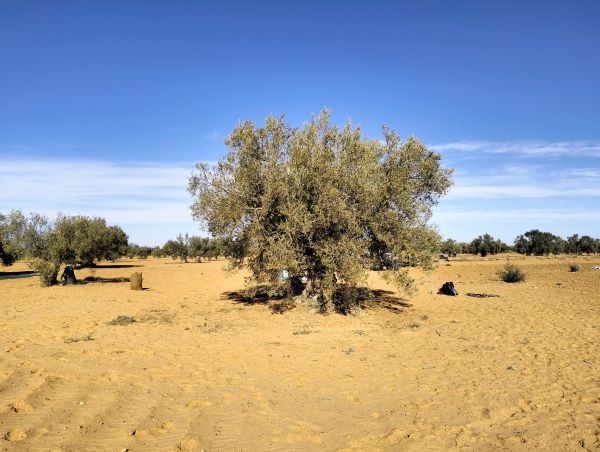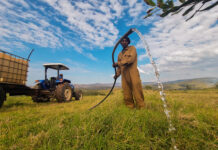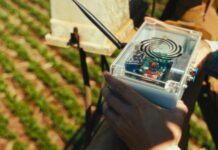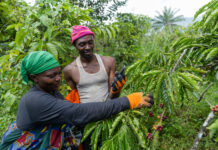On January 14, 2023, scientists, and researchers from the African Plant Nutrition Institute (APNI) and the Tunisian Olive Institute (OIT) gathered at OIT’s experimental station ‘Taous’ in Sfax province (Tunisia), to quantify biomass accumulation and carbon sequestration by a century old olive tree system in northern Africa.
Throughout the week, the task at hand was to measure below and above-ground olive biomass of a single, mature olive tree over 100-years-old. The procedure systematically gathered roots, branches, leaves, trunk, and collar components, all to be measured and analyzed for biomass partitioning and determination of carbon and nutrient stocks.
This research is being carried out under APNI’s Flagship Initiatives “African Tree Crop Systems (ATCS)” and “Resilient Agriculture for African Dryland (RAFAD)”. The inspiration for this work spawned during discussions in mid-2022 between the APNI and OIT as they identified research priorities for olive plant nutrition in North Africa. During the discussions, OIT mentioned that a new collection of genetic materials required the removal of three standing trees. With the permission for the tree’s removal granted by the government of Sfax the work was set to commence.
“During our priority setting it was agreed that a better understanding of below-ground biomass production in the region’s olive stands is needed to understand the links between soil health and carbon sequestration in olives. When OIT brought up their plans for the extraction of three 100-year-old trees from an area of the station in need of stand renewal, APNI suggested using this rare opportunity to generate scientific information during the removal that is impossible to generate otherwise and by doing so also honor the long life of affected trees with a thorough assessment and subsequent publication of results to advance tree crop science,” explained Dr. Kokou Adambounou Amouzou, ATCS Coordinator.
The APNI scientists involved in the assessment of the tree biomass included Dr. Kokou Amouzou; Dr. Hakim Boulal; and Dr. Scott Murrell, while OIT researchers included Dr. Ajmi Larbi; Mr. Khaled Ouertani; Dr. Amine Khouni; and Mr. Rabii Lanwer, a Predoctoral Student.
“The determination of the climate change mitigation role of these centenary trees cultivated in an arid environment with less than 200 mm of precipitation either through the sequestration of carbon and its storage in permanent tree structures, or through the prevention of soil erosion and desertification, is very important to increase awareness amongst stakeholders on the importance of maintaining these plantations and to propose strategies that can further lengthen their viability and sustainability,” attests Dr. Ajmi Larbi, Head of the Integrated Olive Production Laboratory at OIT.
“The achievement of this work required the deployment of specific equipment and a significant number of personnel… we expect the results of this project will produce key reference examples for future olive tree research in North Africa, and beyond, through its exploration of the crop’s potential for carbon sequestration.” attests Dr. Hakim Boulal, RAFAD Leader
As this collaborative research continues, future work is planned to compliment the insights generated by these old trees with data from younger trees, to get a better understanding of how olive tree growth and development changes over time. The study also plans to use this data in its future assessment of the influence of improved nutrient management strategies on biomass accumulation and distribution, carbon allocation, and productivity within entire olive stands growing in the North Africa region.
Learn more about the ATCS Initiative at https://apni.net/projects/ATCS








